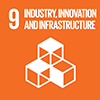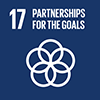Description/achievement of initiative
This partnership commitment focuses on the phytosanitary situation within the Earth boreal zone and thus ensures sustainable development of its ecosystems, guaranties human and fauna life and health by 2023. While building the infrastructure for environment protection and reclaim, this project is meant to provide innovative guidelines on the use of geoinformation technologies and remote sensing data concerning the causes of plant invasions, as one of the disastrous factors. It’s high time to take urgent actions in managing the Earth boreal forestry and its biodiversity.
Implementation methodologies
The commitment will benefit environment protection, ensuring human life and health, flora and fauna. And surely, the profound scientific area research and technology will supply the project with necessary facilities and infrastructures to work everything out clearly and within the given time period.\r\nWhile the project, the following scientific methods are to be implemented: geoinformation modeling and analysis, mathematical and simulation modeling, mathematical statistics, system analysis, photogrammetry, 3D computer modeling, spectral analysis, digital cartography.\r\nAmong others such methods stand for:\r\n1. providing a catalog of the most dangerous and significant invasive, allergenic and medicinal flora types, which are of a certain impact;\r\n2. determining biometric parameters and a vegetation data bank using the criterion of the Normalized Difference Vegetation Index (NDVI);\r\n3. developing the integrated use of multiresolutional satellite images and spectral characteristics to apply for the localization and modeling the spread of invasions;\r\n4. developing a special technique of a visual and automated interpretation of invasive and allergenic plant species based on aerial and satellite imagery;\r\n5. studying correlations between the processes of area changes in distributing invasive, allergenic flora and the factors of region relief, climatological features, human activities, health status of the boreal zone population;\r\n6. developing a specialized GIS project with geobotanical maps of the test boreal zone territories as well as 3D video scenes of test objects to study the ecological condition and the impact on the population health.\r\nAs one of the ultimate global project goals, the commitment is representing practical guidelines to implement the above mentioned methods in the region of the Earth boreal zone belt for a more effective common partnership work. \r\nThe assumed project results in terms of technological and research approach are to be mostly beneficial while contributing the main sustainable development goals:\r\n1. The catalog of the most dangerous and significant types of invasive, allergenic and medicinal plants. 2. The mathematical and conceptual apparatus to implement a quantitative and qualitative phytosanitary situation assessment. 3. Guidelines on the use of the phytosanitary situation geoanalysis methodology using remote sensing data. 4.The report on the results of the assessment, the forecast of the phytosanitary situation influence on the agricultural development, the condition of human health and the dynamics of its temporal changes (on the test territories).
Arrangements for Capacity-Building and Technology Transfer
The further use of the project results runs as the following:\r\n1.predict the spread of the studied plants and climate changes based on the adventitious flora spreading; 2. assess the landscape impact on the sustainable development of the planet ecosystems and the impact of trade, economic and international relations development on the studied project processes. 3. Update the existing vegetation databases indicated by the spatial localization of the studied plants and by the values of the Normalized Difference Vegetation Index (NDVI) for each type of the studied vegetation. 4. assess the impact of plant invasion processes on the terrain biodiversity and sustainable development of the boreal zone ecosystems. 5. assess the influence of invasive, allergenic and medicinal vegetation spreading onto the disease rate among people and the human life duration.\r\nThe project results can be further used by public and private organizations (authorities, scientific, research, project and educational institutions) within the boreal zone borders and they can assume the following activities:\r\n1.Executive decision-making in protecting the environment and monitoring it, as for implementing a set of measures to limit the invasive and allergenic vegetation spreading that causes danger to the human and fauna life and health; 2. New legislation in land use and nature management, considering the influence of the development of plant invasions, which threaten the sustainable development of ecosystems and species diversity within them; 3. Adjust the term "phytosanitary situation" to clarify the termbase and thus set it as a priority issue for the whole planet; 4. Conduct scientific research on the analysis of natural and anthropogenic factors affecting the sustainable development of ecosystems, especially the factors of the invasive and allergenic vegetation spreading; 5. Develop new assessment methods for the areal ecological condition and forecasting the processes of development / degradation of ecosystems using remote sensing data and geoinformation modeling; 6. Improve environmental education based on geoinformation technologies and comprehensible visual methodology in preparing GIS projects for phytosanitary situation assessment; 7. Support public and private organizations and states whose territory is not part of the boreal zone to develop ideas in concern of their territories.
Coordination mechanisms/governance structure
Within the years of 2021-2023 the partners are intended to follow the goals and contribute enormously to a better initiative outcome. They plan to fulfill coordination of specialists within 4 research groups according to their professional competencies. The researchers are to accomplish the following: 1. perform direct tasks of the project coordinator; 2. consult other group members on implementing various stages of the project. \r\n\r\nThe project involves working group 1 from All-Russian Research Institute of Medicinal and Aromatic Plants (VILAR) and groups 2-4 from the Moscow State University of Geodesy and Cartography (MIIGAiK). \r\n\r\nIn this concern research group 1 identifies different types of vegetation on the test territories, catalogs them, and classifies them by categories (invasive, allergenic, medicinal flora). Research group 2 conducts aerial photography, photogrammetric processing of aerial and space images, develops digital terrain and relief models, 3D measuring models, digital planning and cartographic basis, determines metric characteristics of the vegetation cover. Research group 3 conducts geobotanical analysis and spectrometry of vegetation cover of the test territories, develops vegetation data bank with the Normalized Difference Vegetation Index (NDVI) for each flora type, interprets vegetation cover according to remote sensing data, makes an electronic geobotanical map (plan) of the test territories. Research group 4 develops a predictive model of future phytosanitary condition changes, creates a GIS project to assess and forecast phytosanitary environment.\r\n\r\nSuch activities and results are largely professional and focused on the details which makes the working process more optimized and balanced, helps to solve various tasks while implementation.\r\n\r\nThe stakeholders are intended to the cooperation with All-Russian Society of Nature Conservation, World Wildlife Fund together with Boreal Forest which is the platform for progressing sustainable forestry in Russia, as well as World Wildlife Fund emerging in the USA and Canada, and the Committee on Forestry (COFO) at Food and Culture Organization of the United Nations that suggests solutions for climate change, biodiversity and people.
Partner(s)
MIIGAiK (Moscow State University of Geodesy and Cartography)\r\nVILAR (All-Russian Scientific Research Institute of Medical and Aromatic Plants)




 01.2021 - 11.2021
01.2021 - 11.2021
 01.2021 - 12.2023
01.2021 - 12.2023
 01.2021 - 12.2023
01.2021 - 12.2023
 03.2021 - 11.2022
03.2021 - 11.2022
 Time-frame: January 2021 - December 2023
Time-frame: January 2021 - December 2023